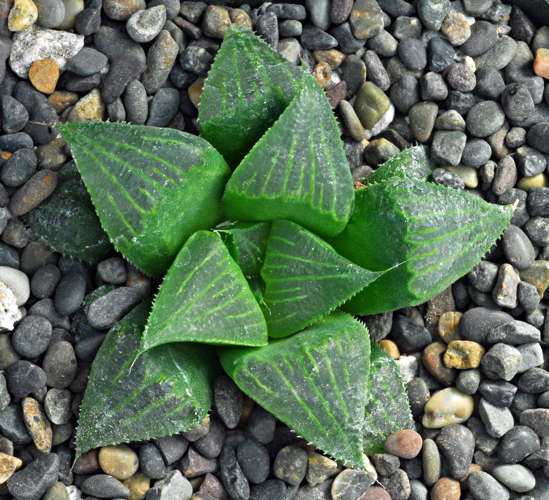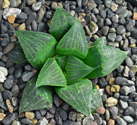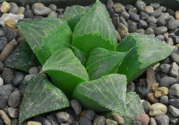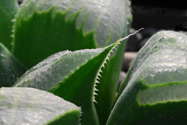One might think that this species is so well-represented in cultivation that yet another distribution is hardly merited. However, it is such a popular subject in collections and is so variable, occurring in a multitude of attractive forms, that it continues to be in demand. The form described as var. solitaria, as the name implies, forms usually solitary rosettes and is, therefore, not as readily propagated as offsetting forms. Typical of the species is the flattened, windowed and lineate, retuse leaf apex but rough with concolorous tubercles and with a terminal bristle. We offer plants from tissue culture of HBG 73876, received from Myron Kimnach (55263) who got it from UCBG 54.042. This is the clonotype of the plant J. R. Brown (01082) wrote about in this journal in 1953 that G. G. Smith described as var. solitaria (Journal of S. Afr. Bot. XII (1946) 5). The type material came from Smith (5373) who received it from J. Dekenah (his # 5). Dekenah collected it in October, 1942, about 6 mi N of Riversdale on the Corrente River, W. Cape, South Africa. While this litany of collectors and numbers may seem excessive, it is exactly the sort of record keeping that leads back to habitat information. This in turn adds greatly to this plant’s historical and scientific value. So, keep those labels! As the variety is now considered to be merely a synonym of H. retusa, we recognize it here as a cultivar. $10.

Published in the Cactus and Succulent Journal, Vol. 86 (2), March - April, 2014


